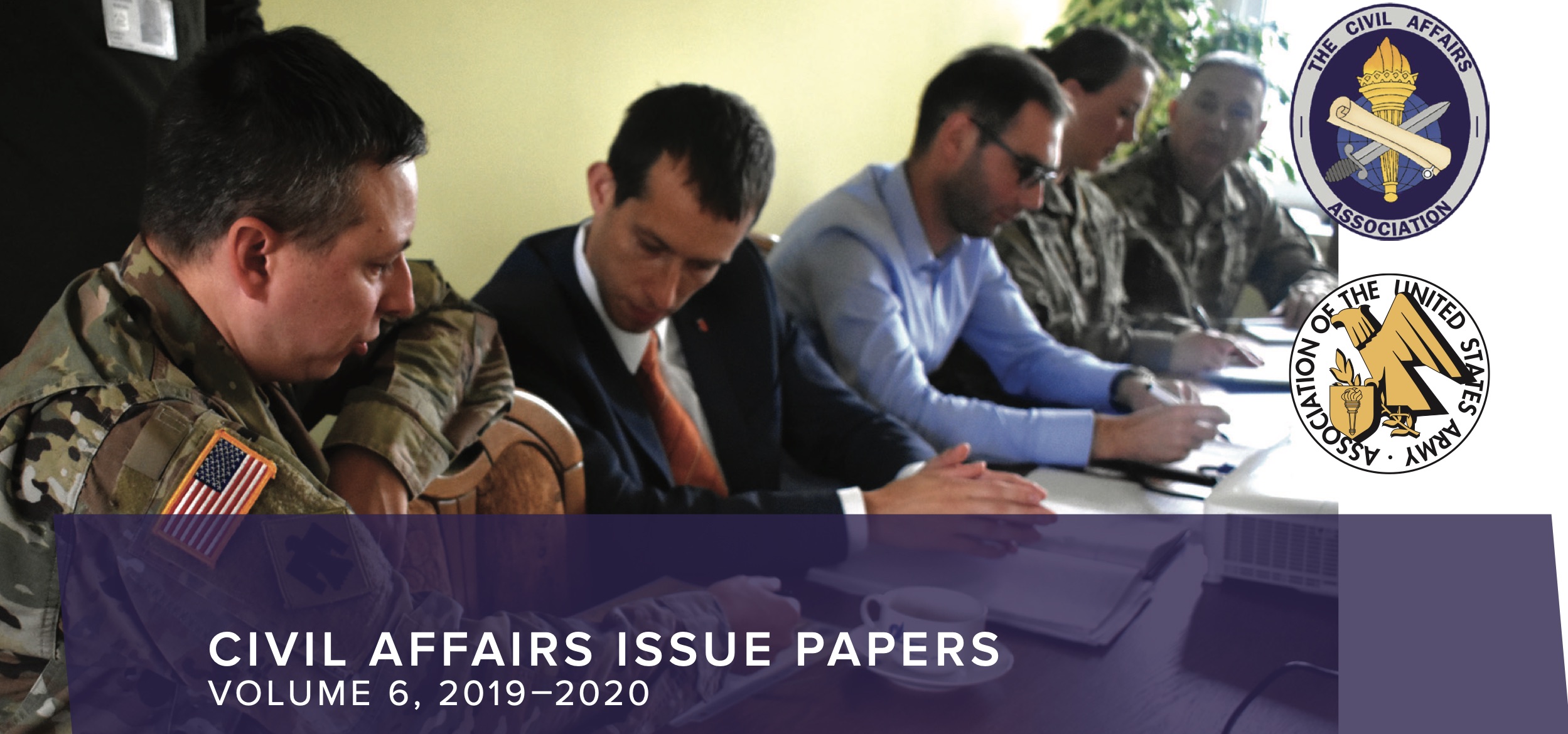The Association of the United States Army’s Institute of Land Warfare has published the 2019-20 Civil Affairs Issue Papers on “Integrating Civil Affairs.”
Edited by ResilientCivilians senior civil-military advisor retired U.S. Army Civil Affairs Colonel Christopher Holshek, this sixth volume is a collection of five papers authored by various civil affairs (CA) professionals, as well as a foreword, executive summary, and workshops report. It details the discussions and progress on civil-military force development at the annual Symposium organized by the Civil Affairs Association in collaboration with partners like the CIMIC Center of Excellence, also a partner to the ResilientCivilians project. While focused on U.S. civil affairs, its discussion of this critical part of NATO’s ability to meet hybrid and population-centric threats is instructive.
The Issue Papers provide a unique, crowdsourced forum for discussion of current topics in civil-military force development along the lines of policy, doctrine, organization, training, materiel, leadership and education, personnel and facilities (DOTMLPF-P). This platform also advances a more strategic, comprehensive understanding of issues facing NATO as a whole. It also helps foster a learning organization, beyond military structures, to include interorganizational partners.
Along with expanding opportunities for civil-military professionals to think and write about future of their enterprise in outlets the Association provides, the Issue Papers “help improve CA writing skills as a function of intellectual readiness and building human capital,” as Association President Col. (Ret.) Joe Kirlin wrote in the Foreword.
Among this year’s conclusions was that CA (and CIMIC) can find better integration, beyond established capacities, as a force for influence, collaboration, and competition in a world of convergent threats and challenges, including for example hybrid and irregular warfare and “gray zone” conflicts. However, NATO civil-military forces like CA must modernize mission capacities across the competition continuum and full range of military operations to meet and adapt to changing military operations requirements as well as strategic imperatives. This includes civil information management – long a major force vulnerability and a significant challenge.
In addition to drawing on and reinforcing core competencies and capabilities better known and understood by supported commands at tactical and operational levels, CA (and CIMIC) must also seize opportunities to “harness collective influence” through national and international strategic initiatives where such forces can find greater effect. It must also help grow an industrial base to improve the civil-military operations state of the art through applied sciences and technology.
The U.S. Army Civil Affairs and Psychological Operations Command (Airborne) – a force of over 10,000 civil-military professionals – has taken the institutional lead in a seven-year strategy to better integrate civil affairs, psychological operations, and information operations capabilities as well as to grow CA functional specialist capabilities and other human capital through partnerships with the private sector and non-governmental organizations.
Such forces must also modernize and better integrate quickly. As the USACAPOC(A) Commanding General Maj. Gen. Darrell Guthrie warned: “We must become an adaptable, agile learning organization or we will be replaced by one that is.”
All the Civil Affairs Issue Papers are downloadable on the Association website.

